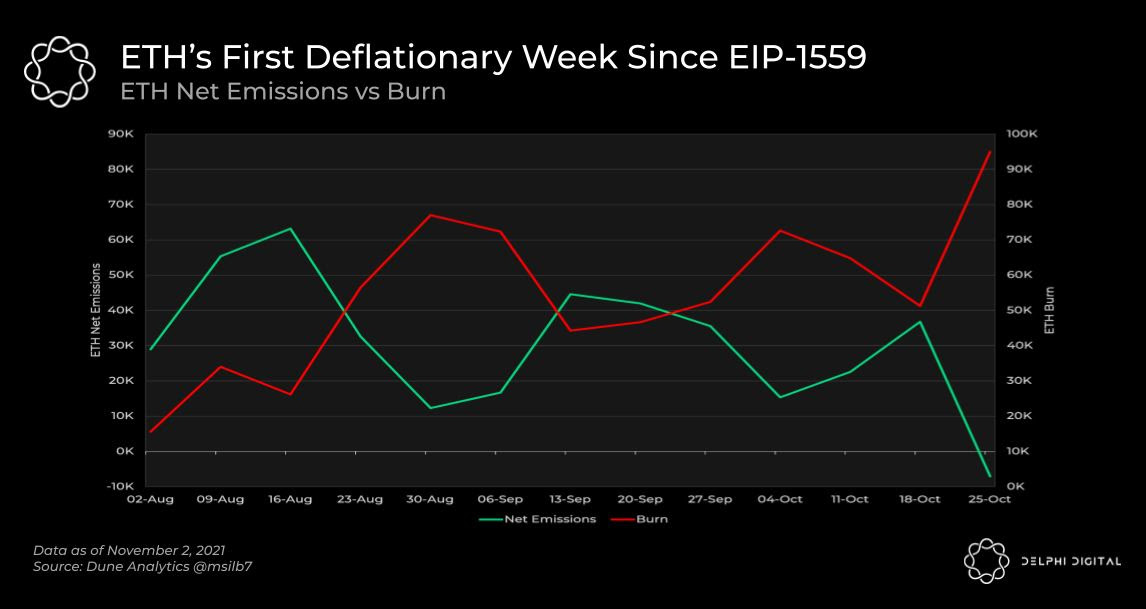As Bitcoin (BTC) and Ethereum (ETH) camps keep fighting for old and new capital in the crypto space, their value proposition narratives are becoming somewhat more complicated with each competing side trying to steal the show from each other.
According to Noelle Acheson, head of markets insights at crypto trading firm Genesis Global Trading, the idea that ETH is changing from being “a technology play to maybe a store value play as well” has gained some traction recently.
Meanwhile, per the analyst, the narrative around Bitcoin is also changing with the Taproot upgrade that is expected to be implemented next week.
The upgrade, which among other things will bring increased privacy and enhanced wallet scripting, will see Bitcoin going from being a store of value to “maybe a technology play as well,” Acheson told Bloomberg.
As previously reported by Cryptonews.com non-fungible tokens (NFTs) and yield farming are just two of the things, usually dominated by Ethereum, that are also indirectly possible on the Bitcoin network. However, for now, at a much smaller scale.
That theme was also picked up by the on-chain analytics firm Chainalysis, which in an emailed report this week made the point that Bitcoin is facing competition from other “more innovative cryptocurrencies.”
“Bitcoin can still have a very high long term value, but it has become clear in the last six months that it competes for investor demand, and does not always win,” Chief Economist at Chainalysis, Philip Gradwell, wrote in the report.
And although he did not suggest that bitcoin should necessarily compete on having the most innovative use cases, saying “it just isn’t designed for that,” the economist did note that BTC can remain a “useful asset” if it sees increased use as capital in Web 3.0 applications.
Also highlighting the competition Bitcoin is facing from Ethereum was the crypto research firm Delphi Digital, which noted in an Ethereum-focused report this week that ETH has just experienced “its first-ever deflationary week since its inception,” thanks to the deflationary aspect of the EIP-1559 upgrade.

However, ETH’s path to becoming sound money is not as straightforward as Ethereum proponents claim.
“There’s also a balancing force at play here,” the report noted, explaining that overly expensive gas prices on Ethereum will bring on-chain activity down, which in turn may reduce demand for ETH, eventually leading to lower prices.
Because of this, Delphi Digital said it is “critical” that Layer 2 scaling solutions for Ethereum gain more traction soon, while mentioning StarkNet, zkSync, Arbitrum, and Optimism as some of the promising solutions.
If these second-layer solutions do not gain the necessary traction, “steep transaction costs will increase activity on alternate [Layer 1 blockchains] such as Solana, Avalanche, Fantom, and Polygon,” the report warned.
Meanwhile, the idea that ETH is becoming “ultra sound money” is also something that has been discussed more broadly among members of the crypto community as of late, with some in the Ethereum camp claiming that EIP-1559 is making just that happen.
As one of the staunchest defenders of Ethereum, Anthony Sassano, the author of The Daily Gwei newsletter, wrote on Monday that the fact that ETH has seen more tokens burned than issued over the past 7 days is “Ethereum’s ultra sound money design proving itself in practice […].”
However, as pointed out by Erik Voorhees, CEO of the crypto trading platform ShapeShift, a prerequisite for being considered “sound money” is that there is “predictability over long time frames” in terms of the monetary policy, and that bitcoin remains superior in this regard.
“ETH can earn this quality with time, but not when mechanisms change frequently,” the well-known community member said.
“We see so much misinformation out there about how Ethereum is deflationary,” Noelle Acheson told Bloomberg. “Occasionally yes it is, but that’s not the purpose,” of the coin, she said.
Meanwhile, in his recent presentation, Eric Wall, Chief Investment Officer (CIO) at Arcane Assets, said that while ETH can compete with BTC (“and it probably will”) “as hard money,” the question that remains is whether it should.
According to the CIO, if the number one cryptocurrency gets replaced by another crypto, then people are going to lose faith that the “digital gold” was created, because you can’t invent a new physical gold. Meanwhile, Ethereum also has many competitors.
“What happens if Ethereum gets replaced by something else? If that happens, how can we describe these assets as stores of value?” he asked, concluding that, in the end, it’s the market that decides what is what.
At 15:45 UTC, BTC trades at USD 62,006 and is down by almost 3% in a day, trimming its monthly gains to less than 29%. The price is up by 358% in a year. ETH trades at USD 4,528 and is unchanged in a day. It’s up by 32% in a month and 1,080% in a year.
____
Learn more:
– What And How ‘Slow’ Bitcoin Wins In The Storm Of Crypto Innovations
– Huge Differences Seen in Banks’ Ethereum Valuation as ETH Tests All-Time High
– Bitcoin Lightning Network Is Growing Faster Than You Think
– Technically Capable Bitcoin Has Other Mass Adoption Challenges To Solve
– Multi-Chain Future Brings Multiple Competitors to Bitcoin & Ethereum – Analysts
– Ethereum Needs to Try Harder To Keep Its Dominance in a Multichain Future
– The Ethereum Economy is a House of Cards
– Why Ethereum is Far From ‘Ultrasound Money’
Credit: Source link





















